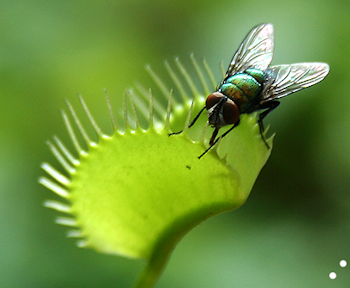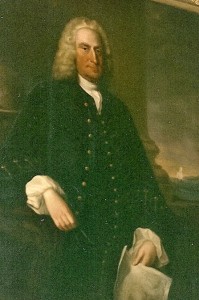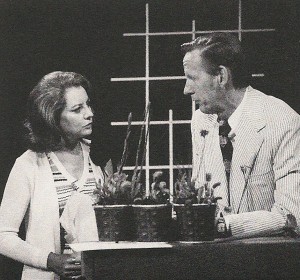Reprinted from Susan’s Blogue
 A fly faces a perilous future after landing on the jaw-like business end of a Venus flytrap. |
WILMINGTON — Growing up in the Land of the Lower Cape Fear has many advantages. For me, one of those is lifelong familiarity with a gloriously peculiar plant known as the Venus flytrap. There seems to have always been a relative or a teacher who had one and was eager to help demonstrate its famous move, and we would watch the clamps snap together. My grandmother told me proudly that they only grew in our little corner of the world.
One summer, my parents gave me two robust flytraps of my own. I loved feeding them small newly dead insects I killed with an old-fashioned metal flyswatter. I watered and looked after my strange charges for a season, but life on a screen porch – and with a child as caregiver – proved to be too much for them.
Supporter Spotlight
The wonder of the species has stayed with me over the years. That a plant would come into being equipped with the means to attract, nab, and digest its own food is amazing. Flytraps are botanical inversions – upending the usual underground conduits of nutrition grounded in dirt, to draw from the air instead. And their quirky design makes human art and engineering pale.
Then, there’s a horrible nature of it all – the sort of scene that makes you want to cover your eyes, but peek through your fingers. What had seemed appealing turns into terror. It would be like sitting down as a guest at a bountiful table, then being snapped into inescapable darkness – and digested by the host.
The first person known to become enamored with the unique plant was Gov. Arthur Dobbs, an amateur botanist who chose Brunswick County as his home. On his 70th birthday, April 2, 1759, he wrote from Castle Dobbs in Brunswick Town, to naturalist Peter Collinson in England: “I have taken a little Plantation at the sound on the sea coast. We have a kind of Catch Fly Sensitive which closes upon anything that touches it. It grows in Latitude 34 but not in 35. I will try to save the seed here. Your most humble servant, Arthur Dobbs.”
 Gov. Arthur Dobbs. Portrait by William Hoare. Dobbs Collection. Photo by author. |
The governor’s son, Edward, hand-delivered his father’s letter to Collinson during the summer of 1759 thus informing the European world for the first time of the Venus flytrap. Soon, Peter Collinson wrote to the famous Philadelphia naturalist John Bartram of the plant with the “iron spring fox trap,” as Dobbs had termed it. Bartram’s son, William, came to Wilmington to live for a while and when he returned, he took a flytrap to his father who made sketches of it. Collinson wrote many letters to Wilmington requesting a live plant but it was nine years before a live Brunswick County flytrap arrived in London.
John Ellis, an eminent London naturalist and another friend of Dobbs’, had drawings made of the plant for The St. James’s Chronicle. It was also Ellis who came up with the scientific name for what had quickly become known in London as the Tippitywichit: Dionaea muscipula. Ellis wrote that the name “may be construed into English, with humble submission both to critics and foreign commentators, either Venus’s Flytrap or Venus’s Mousetrap.”
Supporter Spotlight
Another of the plant’s devotees was Moses Ashley Curtis, an Episcopal priest and botanist. After graduating from Williams College in 1827, Curtis moved to Wilmington where he worked as tutor for Gov. Edward B. Dudley’s children. During that time, he discovered the many unique plants of the area, but was most fascinated with Dionaea muscipula.
Later, Moses Curtis became an Episcopal priest and a botanist of distinction. One of his many publishing accomplishments was a paper entitled “Enumeration of Plants Growing Spontaneously Around Wilmington, North Carolina.” In 1834, he married Mary Jane deRosset, the daughter of Dr. and Mrs. Armand John deRosset of Wilmington.
For most of his career, Rev. Curtis was rector at St. Matthew’s Episcopal Church in Hillsborough. He also served as headmaster of the Episcopal Diosecan Boys’ School for two years, where he taught botany with a passion. His students went away with a working knowledge of the Venus flytrap. One of those boys was named William Augustus Wright, Jr.
Just as Rev. Curtis caught the botany bug from his Williams College professors, Chester Dewey and Amos Eaton, he had spread the good bug to Willie Gus Wright . Wright gained respect in Wilmington as an authority of botany. Later in life, Willie Gus and wife, Louisa Gabriella Holmes, were in London where they visited Kew Gardens. As they wandered through the grounds, he grabbed his wife’s arm and said, “Why look there at our Dionoea muscipula!” A garden employee vanished suddenly and returned quickly with his supervisor.
“Are you from Wilmington, North Carolina?” the supervisor asked the Wrights, knowing the native location of the flytrap. They soon found that the men were all former students of Rev. Curtis.
 Stanley Rehder talks with Barbara Walters to promote the Venus flytrap on the “Today Show” in 1976. Photo: Courtesy of Cape Fear Museum. |
Through time, many folks have spoken the virtues of the Venus flytrap. Longtime Director of the Wilmington Chamber of Commerce, Louis T. Moore, used the plant as one of many unusual features to entice folks to visit Wilmington. From time to time, his descriptions were included in newspapers and magazines across the nation. About 1937, he took a photograph of model Katherine Meier (Cameron) gazing at a Venus flytrap display on Moore’s desk. The picture was reprinted in the Christian Science Monitor.
Celebrated landscape architect Charles Freeman Gillette included Venus flytraps in the improvements he made to Greenfield Lake. Wrightsville Beach resident Mrs. Cecil Appleberry, an inspiring naturalist, led a campaign in 1951 to create state laws limiting the commercial shipment of the plants. Artist Emma Lossen, historian and fly trap aficionado Elizabeth F. McKoy, and florist and botanist Henry Rehder, featured the traps in the 1963 garden he created for St. John’s Art Gallery. Henry’s brother Stanley explained the wonders of the little plant to Barbara Walters and 90 million viewers on the “Today Show” in 1976.
Unlike the old days, when nurturing a Venus flytrap was a trial-and-error process, the Internet gives easy access to helpful instructions. They are picky about a lot of things, not just latitude and longitude. When people spring the trap for fun, it stresses them. They only like certain kinds of water. And the sort of food humans eat can kill them. If I ever get another flytrap, I’ll study first.







